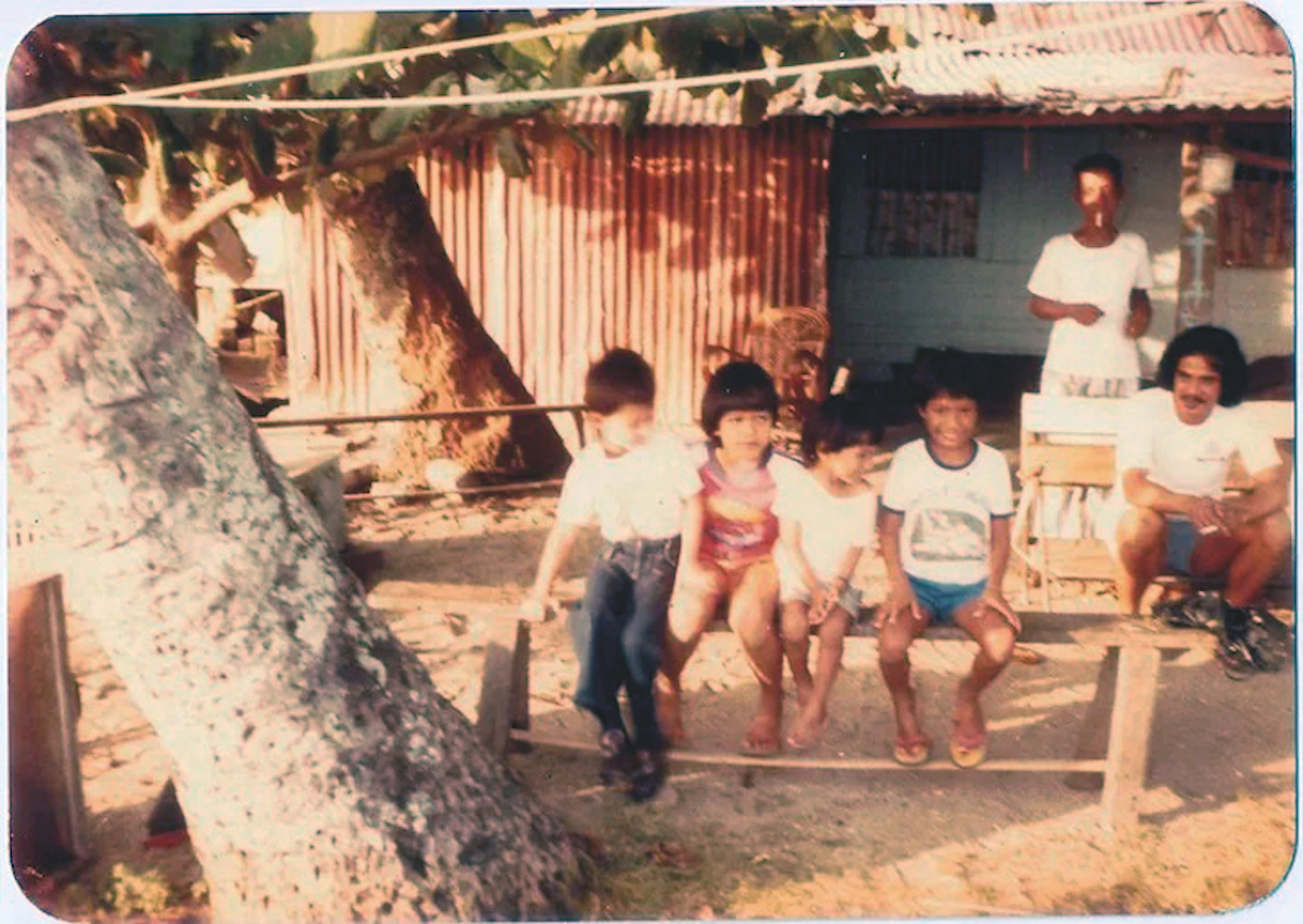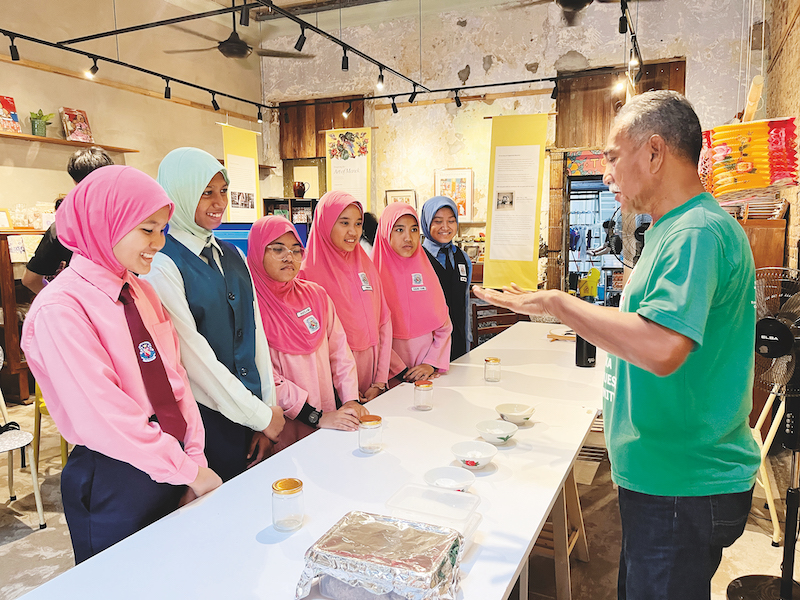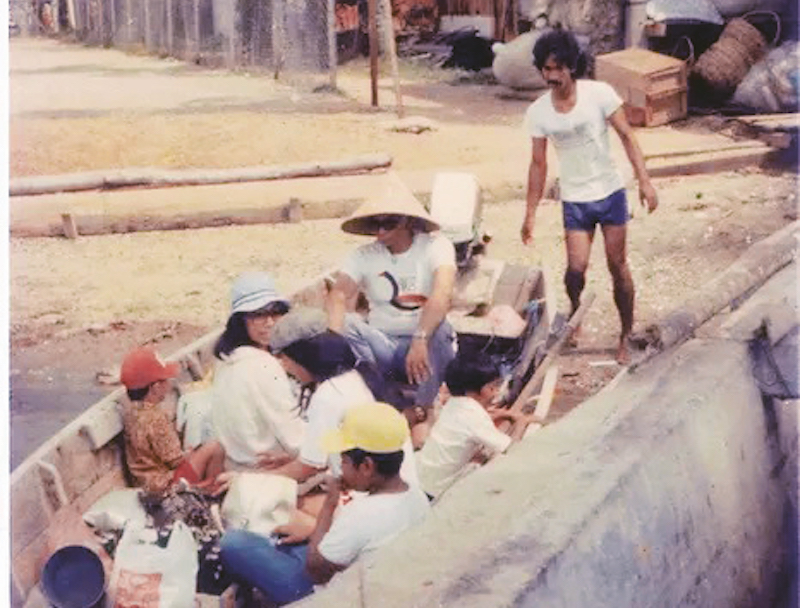
Children take shade under a tree by the beach (Photo: Stories of Praya Lane)
In the historical state of Melaka lies the quiet alley of Praya Lane. The quaint street, which has roots that predate the 16th-century Portuguese settlement, was once home to a buzzing Kristang community (an indigenous group of primarily Portuguese and Malay descent). Over recent years, the area, like many similar ones, has undergone constant redevelopment and, as the older generation dwindles and younger inhabitants move out in favour of major cities, the narratives and traditions tied to the land risk being forgotten.
In collaboration with The Melaka Portuguese Eurasian Heritage Arts and Cultural Society and University of Nottingham Malaysia, cultural hub The Bendahari is presenting an immersive exhibition that will recount the rich history, humble livelihoods and Portuguese-Eurasian heritage of the area from Sept 10 to 16. Stories of Praya Lane marks the second time The Bendahari and university are banding together to spearhead a project of this kind, the maiden venture being the 2023 showcase on the Heritage Trades of Melaka.
Activities over the course of the week will include an interactive presentation and three-hour learning programme aimed mainly at students, along with self-guided discovery trails and workshops for the public. The primary focus is a collection of stories and photographic contributions from more than 35 former and current residents of Praya Lane. “This year’s Stories of Praya Lane has brought together an extremely passionate team of contributors,” says Melissa Chan, steward of The Bendahari. “It means that the quality and breadth of the work are also much more than last year.”
20230518_peo_the_bendahari_msy_16.jpg

The expansion of this edition goes beyond the physical boundaries of its building (within which previous instalments were contained).
Technology comes into play this year, made possible with the help of Dr Marina Ng of Nottingham’s Computer Science Department and her students. “They bring a fresh perspective to history in a way that the younger generation, hopefully, can appreciate,” Chan explains. “The technology enhances visitors’ learning experience.” A particular example of this progress is the “talking plants” station, where they learn about local cuisine through story-telling.
The introduction of technology here is a bittersweet marker for how swiftly time has gone by, reflecting the global age of digitalisation. Still, the neighbourhood’s simpler, carefree era has yet to fade from memory.
No 16 Praya Lane, the childhood address of siblings Martin and Julie Theseira, was “a simple zinc and wooden abode, made solid by the family bonds created there”. It was one of many houses filled with precious moments that time cannot erase.
fishermen_s_club_jetty.jpg

“We spent our days in the kitchen, cooking delicious meals, eating and drinking,” Julie says. “In the backyard were nights of campfire, singing and dancing, especially during the festive season. Sadly, our family home was demolished in 2006 to make way for a hotel.”
While the house itself no longer stands, the duo reminisce vividly about the years spent there and adjacent Kampung Hilir and Kampung Tengah. Martin fondly remembers the rush of playtime with neighbours, the splashing waves of the Straits of Melaka lulling him to sleep, the mouth-watering smell from the nearby mee goreng vendor that wafted through the air in the early mornings. Meanwhile, images of choir practice at the Chapel of Assumption, the endless trinkets and snacks at Ee Moon Sundry Shop, and Coca-Cola floats at Saturday Ice Café remain fresh in Julie’s mind.
What weighs most in the hearts of the siblings and other Praya Lane residents is the unfading sense of fraternity that has become almost synonymous with the enclave.
martin_theseira_teaching_how_to_make_chinchaloh.jpg

“I was born in 1956, and Praya Lane was already a multi-ethnic neighbourhood,” says Martin, who is president of the Melaka Portuguese Eurasian Arts and Cultural Society. “We had Chinese shopkeepers and fishmongers, Portuguese and Indian barbers and kacang goreng men. Even a Malay fisherman friend who lived nearby could converse in Kristang. Praya Lane was more than a street — it was a thriving community. Everyone respected each other, rich or poor, and we came as a family in an emergency and times of need.”
Captain Edwin Sim, another former resident, recalls that locals would flock to the beach at the end of the day to welcome the fishing boats home. “The wives would stand along the beach, with their children holding on to their cotton dresses that fluttered in the wind. There was much excitement as each boat came in, the homecoming not much different from soldiers returning from war, wives and children hugging their husbands and fathers.”
fishing_boat.jpg

Amy Fernandez, who will be co-convening the exhibition’s Jingkli Nona Song & Dance Workshop, remembers how unity ran deep among the people and there was no discrimination, even among the youth.
“We [children] mingled and played with everyone in the kampung. There was no distinguishing by colour, religion, wealth or poverty. We were all the same. We celebrated each other’s auspicious days and festivities together and knew each other’s names.”
She hopes the showcase will bring these bygone years and forgotten stories to light, especially now that the area’s physical landscape has been altered and modernised. “Through this exhibition, Praya Lane will finally be on the radar of tourists and others,” she notes. “It was an obscure village that even local Melakans have never heard of, though they know of Saturday Ice Café, failing to realise that throughout that lorong once lived a vibrant Kristang community.”
For more information on Stories of Praya Lane, visit prayalane.com.
This article first appeared on Sept 9, 2024 in The Edge Malaysia.


